When it comes to orthodontic appliances, braces are just the beginning. There are many different appliances, though less common, that we use to treat orthodontic conditions. Below are some appliances you may not yet be familiar with.
Headgear is worn to correct overbite. It places pressure on the upper teeth and jaw to get everything moved into the correct alignment. Headgear is prescribed to be worn a certain number of hours each day. It should not be worn when eating, drinking, playing sports, or brushing teeth.
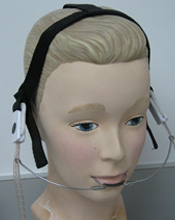 High Pull Headgear |
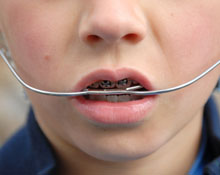 Low Pull Headgear |
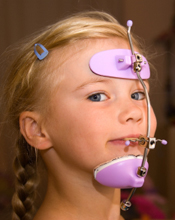 Reverse Pull Headgear |
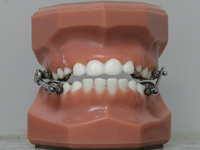 Herbst appliances are worn when the patient has a lower jaw that is too small. This causes the upper teeth to protrude and the lower teeth to bit into the roof of the mouth. The Herbst appliance prevents the lower jaw from moving backward and encourages growth so it can catch up with the upper jaw. This appliance can be adjusted and does require the patient to change their diet.
Herbst appliances are worn when the patient has a lower jaw that is too small. This causes the upper teeth to protrude and the lower teeth to bit into the roof of the mouth. The Herbst appliance prevents the lower jaw from moving backward and encourages growth so it can catch up with the upper jaw. This appliance can be adjusted and does require the patient to change their diet.
Palatal expanders are bonded to the upper molars. The appliance places pressure on the upper jaw to widen it. It is used whenever the upper jaw is so narrow that is causes tooth crowding. This appliance works when the patient is still growing by encouraging more bone to grow between the two halves of the jaw.
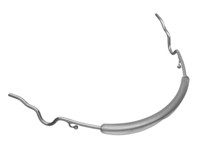
Lip bumpers are used on patients with tooth crowding in order to avoid pulling teeth. The lip bumper is a wire extending from one molar to the other and is designed to prevent lips and cheeks from touching the teeth. Your mouth places pressure on the bumper when the mouth is moved and it effectively moves the molars back. The end result is more space for teeth.
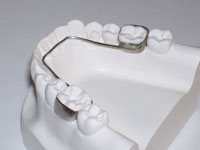 A lingual arch is a space maintainer, specifically designed to hold molars in place. In general, this appliance is used in children who lose their baby teeth too early or in children whose mouths do not have enough space for their permanent teeth to emerge. It is usually removed once all permanent teeth are in place.
A lingual arch is a space maintainer, specifically designed to hold molars in place. In general, this appliance is used in children who lose their baby teeth too early or in children whose mouths do not have enough space for their permanent teeth to emerge. It is usually removed once all permanent teeth are in place.